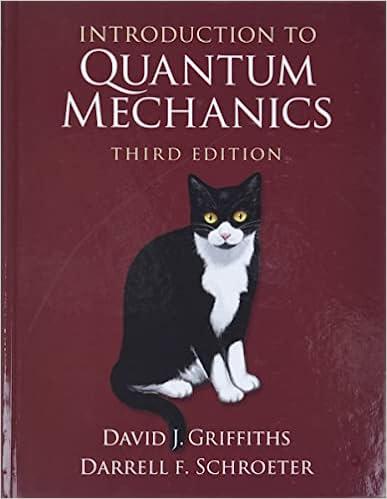We can extend the theory of a free electron gas (Section 5.3.1) to the relativistic domain by
Question:
We can extend the theory of a free electron gas (Section 5.3.1) to the relativistic domain by replacing the classical kinetic energy, E = P2/2m, with the relativistic formula,![]() Momentum is related to the wave vector in the usual way: P = ћk. In particular, in the extreme relativistic limit, E ≈ pc = ћck.
Momentum is related to the wave vector in the usual way: P = ћk. In particular, in the extreme relativistic limit, E ≈ pc = ћck.
(a) Replace ћ2k2/2m in Equation 5.55 by the ultra-relativistic expression, ћck, and calculate Etot in this regime.
(b) Repeat parts (a) and (b) of Problem 5.35 for the ultra-relativistic electron gas. Notice that in this case there is no stable minimum, regardless of R; if the total energy is positive, degeneracy forces exceed gravitational forces, and the star will expand, whereas if the total is negative, gravitational forces win out, and the star will collapse. Find the critical number of nucleons, No, such that gravitational collapse occurs for N > Nc. This is called the Chandrasekhar limit.
(c) At extremely high density, inverse beta decay,![]() converts virtually all of the protons and electrons into neutrons (liberating neutrinos, which carry off energy, in the process). Eventually neutron degeneracy pressure stabilizes the collapse, just as electron degeneracy does for the white dwarf (see Problem 5.35). Calculate the radius of a neutron star with the mass of the sun. Also calculate the (neutron) Fermi energy, and compare it to the rest energy of a neutron. Is it reasonable to treat a neutron star nonrelativistically?
converts virtually all of the protons and electrons into neutrons (liberating neutrinos, which carry off energy, in the process). Eventually neutron degeneracy pressure stabilizes the collapse, just as electron degeneracy does for the white dwarf (see Problem 5.35). Calculate the radius of a neutron star with the mass of the sun. Also calculate the (neutron) Fermi energy, and compare it to the rest energy of a neutron. Is it reasonable to treat a neutron star nonrelativistically?
Equation 5.55
![]()
Step by Step Answer:

Introduction To Quantum Mechanics
ISBN: 9781107189638
3rd Edition
Authors: David J. Griffiths, Darrell F. Schroeter





